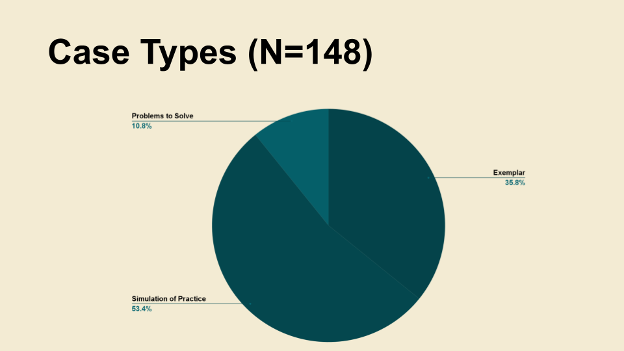Thank you for taking the time to learn more about cases evaluators have developed to teach and reflect on their professional practices. We are Leanne Kallemeyn and David Ensminger, members of the Case Collaborative. I (Leanne Kallemeyn) am an Associate Professor at Loyola University Chicago and have been practicing and teaching evaluation for almost 20 years. And I (David Ensminger) too am an Associate Professor at Loyola University Chicago and have been practicing and teaching evaluation for 18 years.
Through the work of International Society for Evaluation Education (ISEE), we had the opportunity to share our interests in cases for understanding evaluation practice with colleagues. We formed the Case Collaborative, and shared the assumptions that evaluation is a context-dependent, socio-political practice that requires practical wisdom to negotiate. Learners, then, need opportunities to engage in context rich evaluation experiences. Cases provide an opportunity to do this.
Rad Resources
One of our first tasks was to identify existing cases for teaching evaluation. Over several years, we have identified 148 cases. We identified these cases based on a list Case Collaborative members generated. We also solicited recommendations from colleagues (maybe YOU–thank you!) during sessions at the American Evaluation Association and Canadian Evaluation Society. Click here to utilize the repository of cases.
To help educators and trainers use cases most relevant for their audience, we cataloged the cases based on several qualities:
- Learning objectives, including competencies and standards
- Types of instructional cases and instructional resources available
- Elements of evaluation practice, such as evaluation theory/approach or data collections methods
- Evaluands and their contexts, such as sectors
Lessons Learned
1. Very few cases included learning objectives (oops–that’s an area for improvement when we develop new cases)
2. Over half of the cases provide simulations of practice, meaning they provide a rich description of the evaluator’s thinking, decisions, and actions in response to the contextual elements within the case. About a third of cases are exemplars, or provide a contextually relevant illustration of specific concepts, constructs, or practices within evaluation. Very few cases engage a learner in solving problems in evaluation practice.

3. The four most common aspects of evaluation practice that were focused on in cases included context, data collection/methods, evaluation theory/approach, and evaluation partners.

4. The majority of cases were based in the education, health and social welfare sectors.

Click here to read our article titled “What are the characteristics of the cases we use to teach and learn evaluation?” in New Directions for Evaluation about our document review study of the cases. This article is free for you to read if you are logged into your AEA account.
Have you written or used a case not included in our repository? Contact Leanne Kallemeyn at lkallemeyn@luc.edu so we can add it.
The American Evaluation Association is hosting Case Collaborative week. The contributions all this week to AEA365 come from members of the Case Collaborative, a global group of evaluators focused on the use of evaluation cases. Do you have questions, concerns, kudos, or content to extend this AEA365 contribution? Please add them in the comments section for this post on the AEA365 webpage so that we may enrich our community of practice. Would you like to submit an AEA365 Tip? Please send a note of interest to AEA365@eval.org. AEA365 is sponsored by the American Evaluation Association and provides a Tip-a-Day by and for evaluators. The views and opinions expressed on the AEA365 blog are solely those of the original authors and other contributors. These views and opinions do not necessarily represent those of the American Evaluation Association, and/or any/all contributors to this site.
